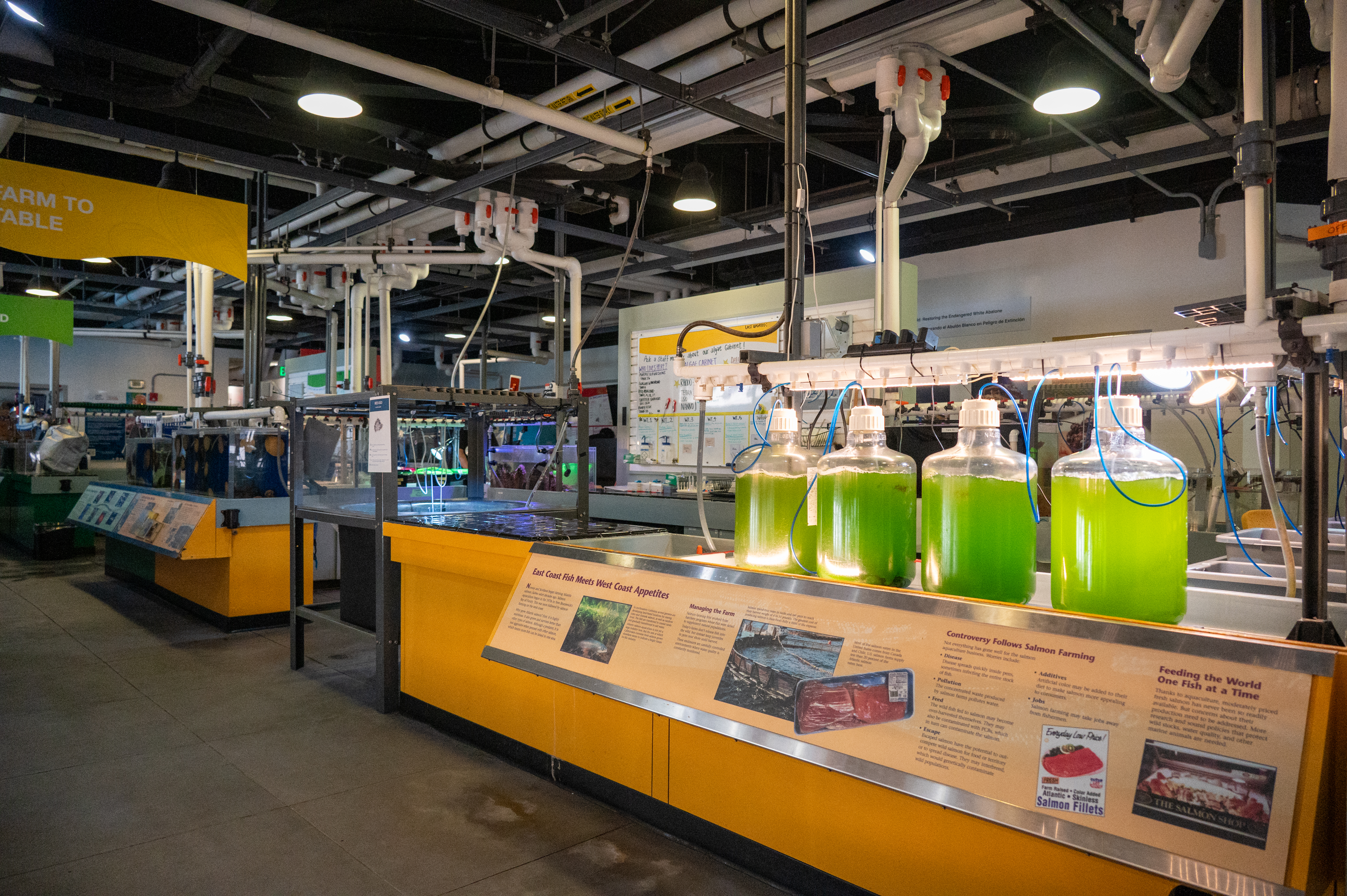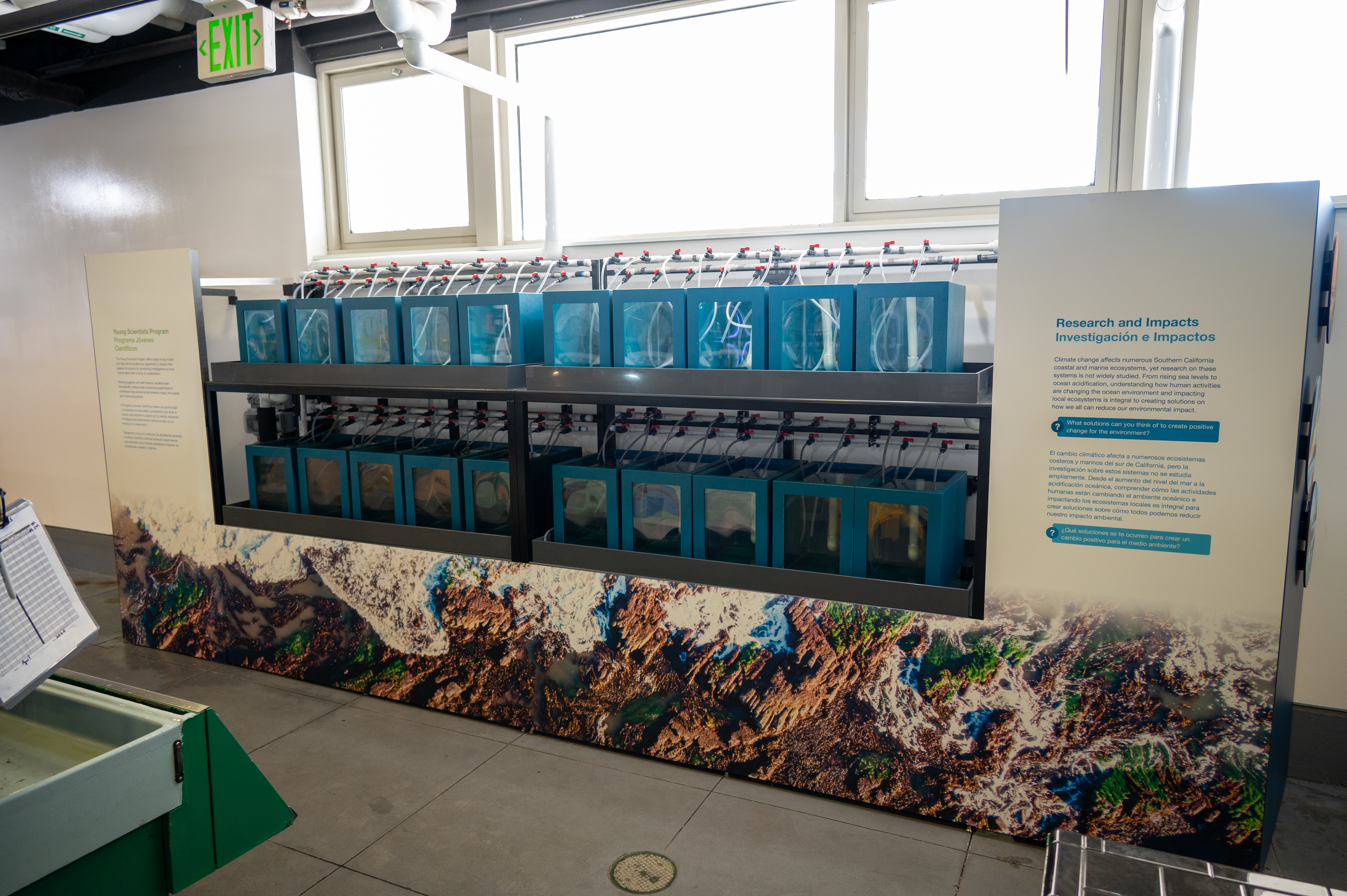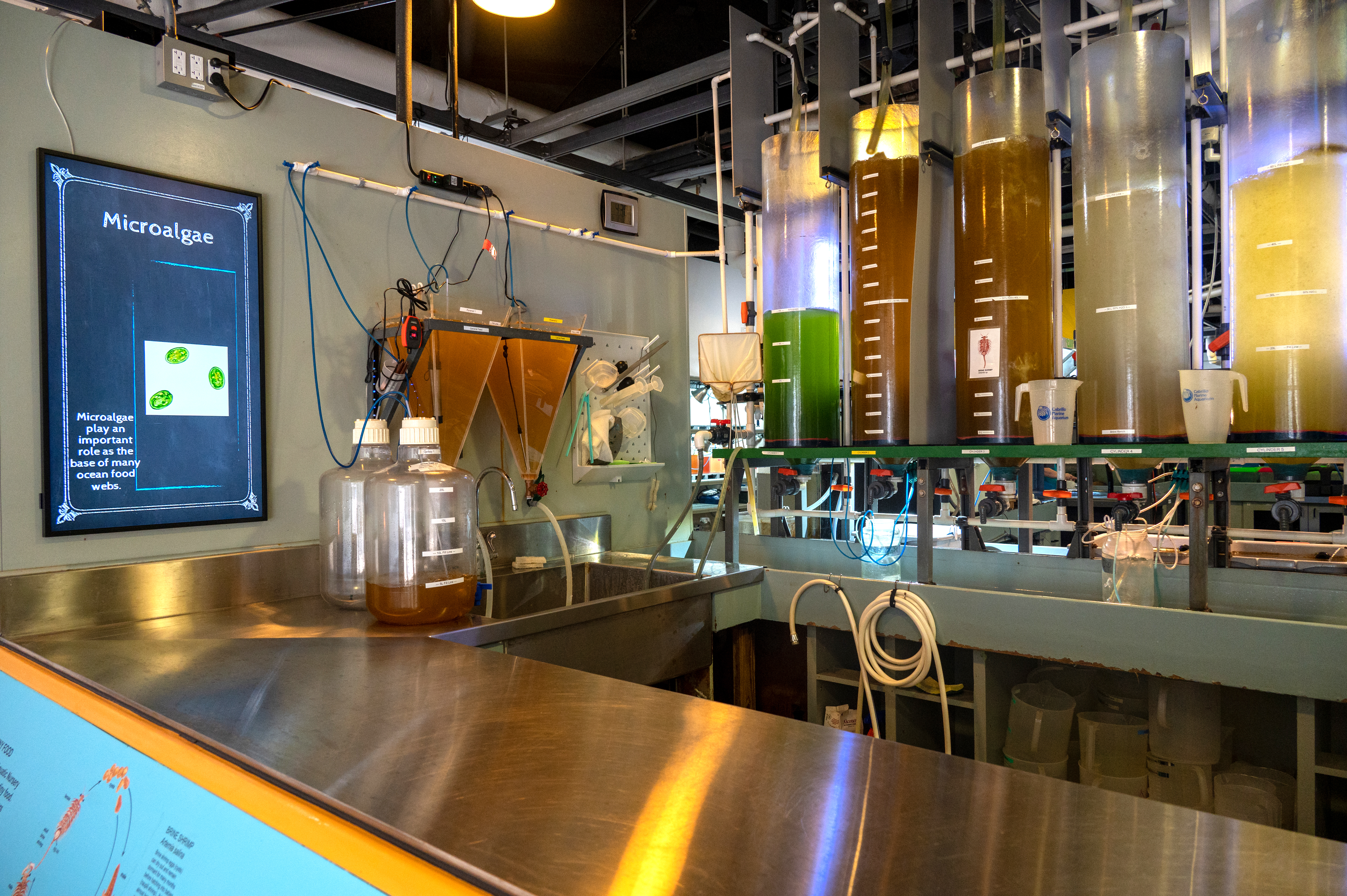
The Aquatic Nursery is a working laboratory where visitors have access to active scientific research, and to the scientists-in-training who are conducting projects under the guidance of CMA’s professional staff. Exhibits explain complex, scientific principles and processes for visitors of all ages. Look carefully, exhibits and projects change often and there is always something new to see.
Visit the interpretive exhibits in the Aquatic Nursery as topics focus on growing and caring for young animals. The laboratory is composed of open research wet tables displaying more than 40 marine species, which focus on four major aquaculture themes:
Growing for Human Food – Raising aquatic animals for human food is big business in many countries and a growing industry in the United States. White seabass, purple sea urchins, red abalone, and spot-prawns have been cultured in the Aquatic Nursery to show examples of Southern California aquaculture for human consumption.
Aquaculture for Species Survival – Raising animals to help threatened and endangered species has become an important mission of zoos and aquariums worldwide. White abalone, Pacific seahorse, and Sunflower sea stars in the Aquatic Nursery demonstrate the efforts necessary to help preserve these Southern California natives whose populations have become depleted.
Research for Teaching, Sharing, and Science – Pipefish, grunion and sea jellies raised in the Aquatic Nursery are shared with aquariums, zoos and educational institutions for public exhibition. Raising marine animals in the lab can reduce the demand to collect from the wild to display for public education and research.

YSP and Climate Change
The Young Scientists Program Climate and Impacts Exhibit, showcases innovative and novel research conducted by CMA staff, Young Scientists, and academic research affiliates. The exhibit brings attention to the profound impacts of climate change, ocean acidification, and other environmental stressors on Southern California’s coastal and marine ecosystems, inviting guests to reflect on actionable steps for reducing these stressors and their personal carbon footprints. The innovative research system also equips CMA with a standardized tank system for conducting high-quality research, with the aim of addressing the underexplored challenges faced by Southern California's marine ecosystems. This initiative is instrumental in fostering informed conservation efforts, preserving biodiversity, and ensuring the sustainability of coastal ecosystems for generations to come.

Pacific Seahorse Conservation
The Pacific seahorse is a type of marine bony fish that lives in seagrass beds and on rocky reefs. It attaches its prehensile tail to grasses, seaweeds, and gorgonians usually at depths shallower than 20 meters (65 feet). Pacific seahorses occur from San Diego, California to Peru and are the only species of seahorse that lives along the Pacific coast of North and South America. Though typically uncommon along the southern California coast, they have been recorded as far north as San Francisco during periods of warmer waters. The body can be gold, maroon, brown, white, or a combination of these colors. The Pacific seahorse can grow to 30 cm (12 inches) in length and is the 2nd largest species of seahorse in the world.

White Abalone Conservation
Abalone are members of the family Haliotidae. The genus name is Haliotis, which means "sea ear," and refers to the flattened spiral shape of the shell. The name abalone is probably derived from the Spanish-American word aulon or aulone. The shell protects the body of the abalone. Along the side is a row of respiratory pores along the spiral that allows water to bathe the gills for oxygen absorption and for flushing away bodily wastes.
Today, abalone populations are dwindling. White Abalone has been identified as an endangered species.

Aquaculture Kitchen
Clear plastic tubes filled with living cultures bubble away in the kitchen. Cultures of rotifers and newly hatched baby brine shrimp provide important live food used in husbandry projects in the Aquatic Nursery.

Microalgae Brew
The Microalgae Brew exhibit showcases the sustainable cultivation of myriad of microalgae species. The diversity of these microscopic alga serve as a vital source of nutrition for many of the Aquariums inhabitants, such as filter feeders, larval fish and invertebrates, including the endangered white abalone. This microalgae rack extends beyond the exhibit, by providing research opportunities offered through our Young Scientists Program, inviting curious minds to delve into the ecological significance of these tiny organisms.